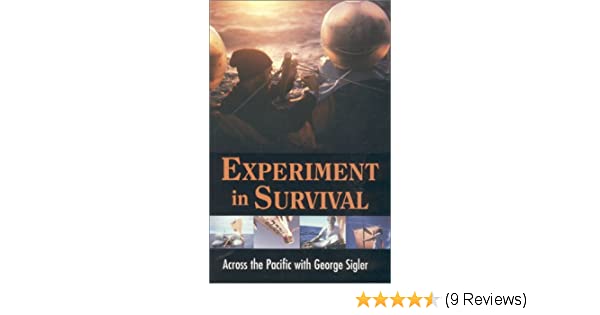July 6, 1974 – Pacific Ocean – 85 miles off the coast of San Francisco: It was only the second day out, and the 15-foot rubber raft was already in trouble. A low-pressure system kicked up 35-knot winds and a huge 30-foot wave flipped the raft and the two men on board into the 60-degree water. They were in the frigid water two hours before finally getting the raft turned back over.
Once back on the raft, which they had named Courageous, George asked Charlie if he wanted to give up and call the Coast Guard. Charlie responded, “Hell, no!” They would each think about quitting in the days to come, but they never talked about it again.
George Sigler was born in Abilene, Texas. After graduating from McMurray University, he joined the Navy and became a carrier pilot flying an A-3 Skywarrior in Vietnam. Once, while ferrying a Cessna airplane from Hawaii to Australia, he had to ditch the plane into the Pacific after the engine failed. Although rescued from his life raft in 24 hours, the experience left George with an obsession to create a better survival kit.
While developing his kit, George read hundreds of books about ocean survival. He discovered that most shipwrecked victims died due to giving up, not starving. He designed a survival kit to keep a person alive for 60 days – the longest he calculated it would take to reach land from any spot in any ocean in the world.
By the summer of 1973, George had completed his Sig II survival kit. It included solar stills for making water; a navigational watch; ocean charts; a signal mirror; flares; a knife; 50 feet of rope; an aluminum space blanket for warmth; a raft patching kit and a 5’ by 7’ tarp for a sail.
George was convinced that with the aid of his Sig II kit, someone could survive for 60 days on a life raft and sail the craft to safety. But he needed to prove it so he began to plan his survival experiment. He would drift from San Francisco to Hawaii in a raft, covering the 2,000 miles in roughly 60 days.
When his new wife couldn’t talk him out of going, she demanded that he take a partner. George asked Charlie Gore, a friend and former Navy pilot, who was as crazy and determined as George. George knew Charlie wouldn’t quit regardless of how difficult things got.
The Coast Guard strongly cautioned George not to go. It was too dangerous. They predicted that George and Charlie would die and that the search for them would be costly. Reluctantly, the Coast Guard agreed not to search for them for 60 days.
On July 4, the men left the Golden Gate Bridge with only four pounds of food and no water. Two days later, when the raft capsized they lost one of the solar stills for making drinking water. The remaining two solar stills only produced 12 ounces each a day, about a can of cola each. The men were always thirsty during the trip. They also lost a sleeping bag and had to share one during the adventure.
George and Charlie were spotted on August 27, day 55, by a Coast Guard C-130 plane that picked up their radio signal. The following day, they were picked up by a Coast Guard cutter northeast of Oahu. George had proven his theory. The two men had each lost about 60 pounds but were otherwise in good shape when they reached Hawaii.
George only sold a few hundred of the survival kits but he proved his point. Today, 74-year-old George Sigler owns Skywarrior in Pensacola, Florida, a company that trains pilots for the Navy. He is frequently asked to speak to organizations about his crazy survival experiment.
“Twenty years from now you will be more disappointed by the things you didn’t do than by the things you did. So throw off the bowlines. Sail away from the safe harbor. Catch the trade winds in your sails. Explore. Dream.” Mark Twain
